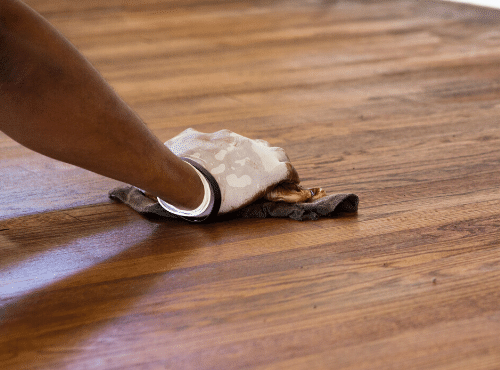It’s no surprise that many homeowners would love to have hardwood flooring. It’s sturdy, elegant, gorgeous, and will last a lifetime.
However, investing in a hardwood flooring installation is a big undertaking. Once you choose to add it to your home, you would have to, quite literally, live with that decision for a long time.
Buying hardwood flooring is more than just picking your favorite color or finish. In today’s post, we’ll give you a practical guide on purchasing hardwood floors, including what essential factors to think about before you decide if it’s the right choice for you and your property.
Hardwood Flooring: Engineered or Solid Wood?
Choosing either engineered hardwood flooring or solid hardwood will be influenced by the specific space you want to install it in. Both flooring options are available to consumers in different thickness and width.
Solid wood flooring is composed of a single hardwood made up of strips or planks. On the other hand, engineered hardwood is built with a top layer of hardwood and plywood materials at the bottom.

Areas of the home that receive a lot of moisture, such as the basement or the kitchen, engineered wood flooring is the better choice.
Also, solid wood can be prefinished several times while its engineered counterpart cannot be prefinished more than once.
Finishing: Site Finished or Prefinished
Prefinished flooring options mean that they were already finished at the flooring factory. The steps to sand, stain, and coat them are finished before they are available to buy for consumers.
When you buy prefinished floors, all that needs to be done is the installation; there are no other requirements needed. This is the best feature of this flooring option. Many property owners love the convenience that comes with purchasing prefinished floors.
On the other hand, site-finished floors mean precisely what the name suggests. After the installation on-site, the floors need to be sanded, coated, and finished.
If you prefer to go with site finished floors, the entire process may take several days to a week. You may not be able to access the room where the installation took place to allow for the sanding, coating, and finishing to be fully completed.
Selecting the Color that Will Work Best for Your Home
Wood species come in many different textures, colors, and density. This gives many fantastic hardwood flooring options for property owners.
The wood’s natural colors come in light, dark, and moderate. When you are selecting wood colors, you should think about getting colors that fit your stylistic choices and preferences.
Go for dark shades if your space lets in a lot of natural light. Some examples of dark wood are walnut and mahogany. Go for light wood such as pine to brighten up your space if it’s quite dark. Light-colored wood floors can also conceal scratches.
Moderate or medium colored wood sits somewhere in the middle of light and dark-colored wood floors, and they can work no matter what interior style you have. Some examples of moderate hardwood are cherry and oak.
Length, Width, Thickness of Wood Planks
Hardwood flooring options come in many different varieties of width, length, and thickness. If you want easier installation, go for wider planks than the narrow counterpart.
The thickness level of the plank will let you know what the wear layer is. The thicker the layer is, the more times it allows you to finish the floor.
Grain Patterns of the Hardwood Flooring
The species of the wood determine the grain pattern. How the wood was cut from the source will also reveal the grain pattern it will develop.
Typically, the grain patterns come in straight grain, curly grain, or flat grain. You can choose what you prefer to go with your interior style.


